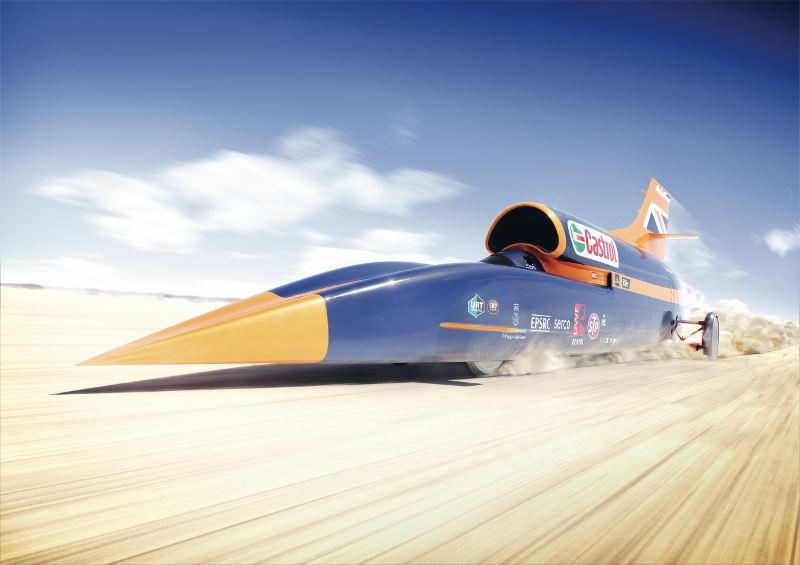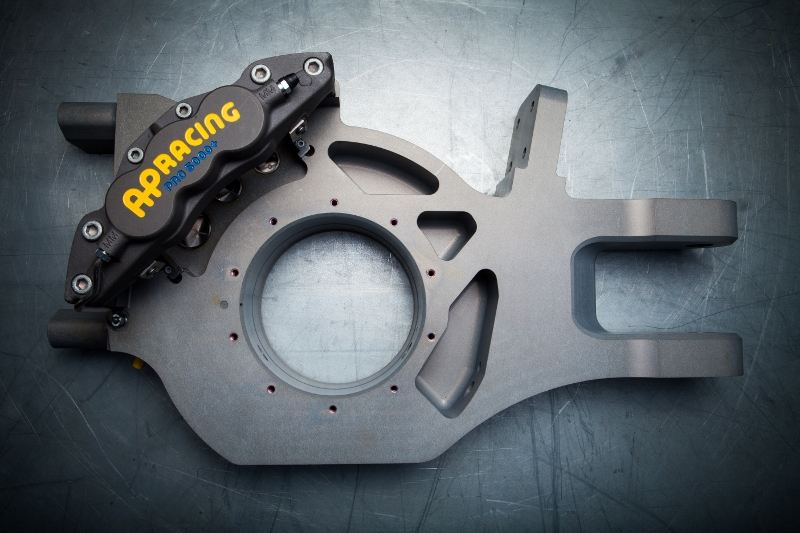08
Aug 2014AP Racing brakes the Land Speed Record attempt with BLOODHOUNDSSC
 Drawing
on our vast experience in brake technology, AP Racing is
helping put a stop to the vehicle aiming to reach 1000mph in
2016, by providing bespoke brake systems.
Drawing
on our vast experience in brake technology, AP Racing is
helping put a stop to the vehicle aiming to reach 1000mph in
2016, by providing bespoke brake systems.
Breaking the Land Speed Record is a major challenge, but bringing
the vehicle safely to a stop afterwards is another and the team
behind BLOODHOUND SSC turned to AP Racing when figuring out how
to stop the jet and rocket-powered vehicle. AP Racing’s
experience with other world record attempts, and its history of
innovation, proved valuable in tackling this unique
challenge.
Providing the last link in the chain, AP Racing’s contribution
will handle the final stage of braking BLOODHOUND SSC after the
vehicle’s air brakes have been deployed.
Initially the team looked at using off-the-shelf brake components
for the record attempt but, due to the huge forces at work, they
quickly realised that a unique solution would be required.
Drawing on the engineering behind aircraft brake systems and data
from RTO (Rejected Take Off) scenarios, the team carefully mapped
out the requirements with the BLOODHOUND team.
 Providing different brake systems for both the initial runway
testing in the UK and the high-speed runs in the South African
desert, AP Racing have selected the materials best suited to each
run: taking into account speed, centrifugal force and operating
temperature. Cooling was one prime consideration: the vehicle
cannot afford air cooling as this would increase aerodynamic
drag.
Providing different brake systems for both the initial runway
testing in the UK and the high-speed runs in the South African
desert, AP Racing have selected the materials best suited to each
run: taking into account speed, centrifugal force and operating
temperature. Cooling was one prime consideration: the vehicle
cannot afford air cooling as this would increase aerodynamic
drag.
“The two scenarios under which BLOODHOUND SSC will run present
very different operating parameters,” explained Richard Bass, AP
Racing. “The trial runs will actually require the braking system
to slow the vehicle from a higher speed, but for the record
attempts the brake components have to withstand far harsher
conditions.”
For the trial runs in the UK, braking will be provided by two AP
Racing systems, on the front and rear, both employing
carbon/carbon disc brakes. These will slow the vehicle from a
maximum 235mph as the car completes its assessment and shakedown
runs.
However, for the high-speed runs only the front brakes will be
employed, using specially constructed steel brake discs. Designed
to withstand the high centrifugal forces generated, they can
rotate at 10,000rpm without disintegrating and will take over
once BLOODHOUND SSC’s air brakes have been deployed. These
friction brakes handle the last stage of the vehicle’s
deceleration, from 160mph to a complete stop.
An extra complexity was that, as part of the rules covering an
LSR attempt, the vehicle has to make the two timed runs within 60
minutes. This meant that all components had to work flawlessly
for the two runs, as there would be no time to affect repairs.
The engineers also had to allow for an emergency situation, where
the brake system could be engaged, at a higher speed, if the
other braking systems malfunctioned for any reason.
As part of its work on BLOODHOUND SSC, AP Racing also produced
the two front suspension uprights for the vehicle. In order to
keep the frontal area of the car as small as possible, and so
more aerodynamic, each front brake caliper is half built into the
front upright. This unique solution allows the suspension and
brake package to be as narrow as possible and help deliver the
car’s narrow front track. Despite the condensed design each
upright, made from solid aluminium, weighs over 21kg, and
together both can withstand 30 tonnes of peak suspension load, as
the car breaks its 1000mph target.
Share:












